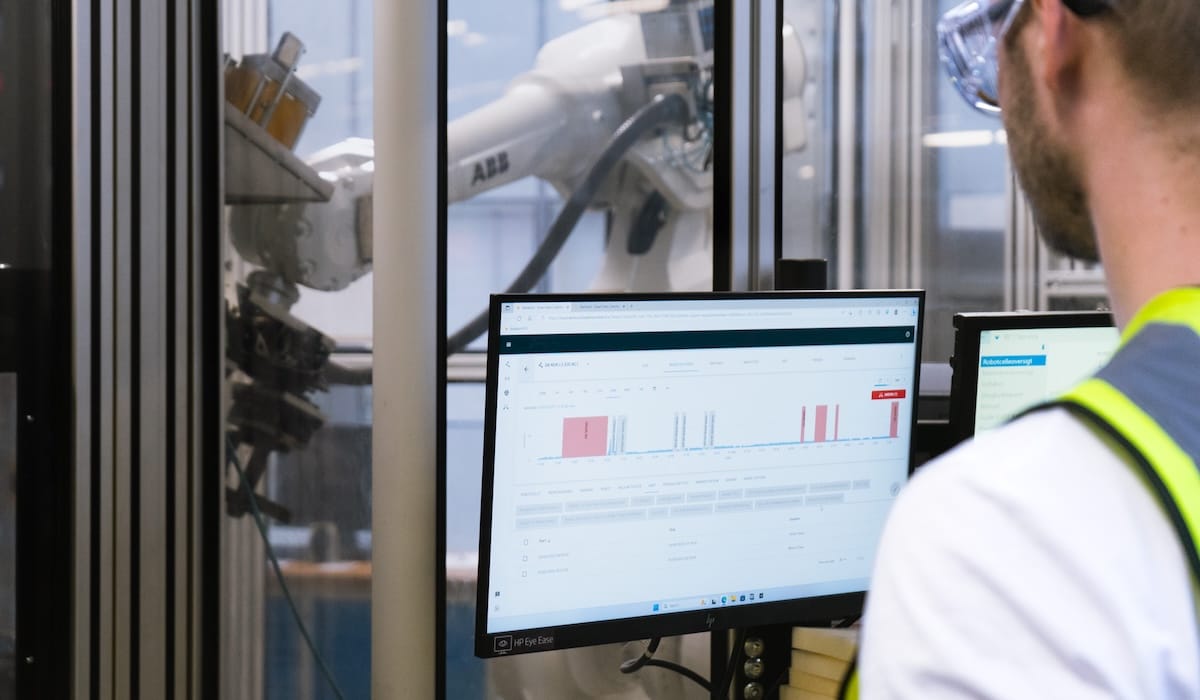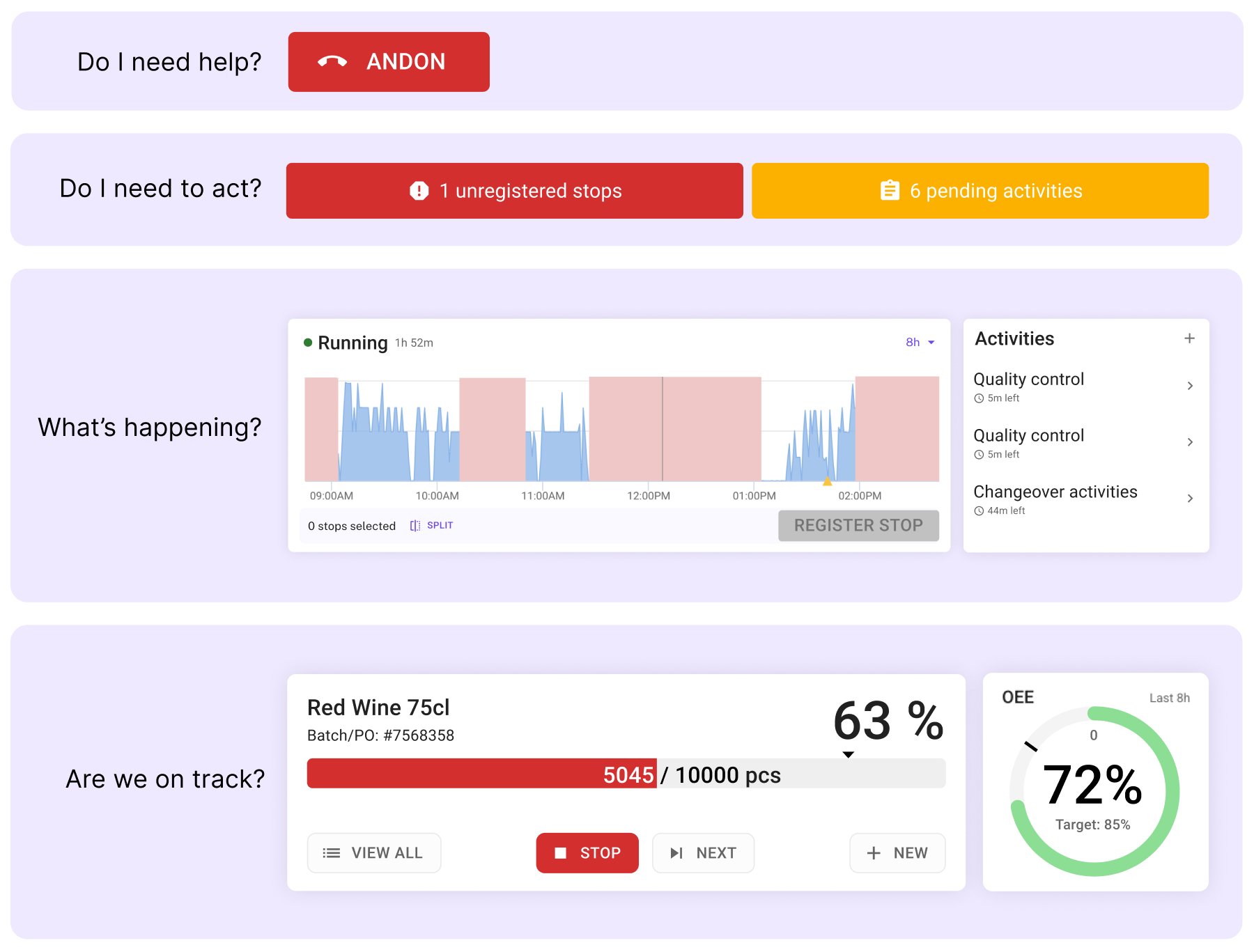Operator-driven reliability (ODR) guide for manufacturers
Operator-driven maintenance is empowering operators to address maintenance needs before they become critical failures and can drastically reduce downtime.

If you run a plant, you want less downtime and fewer surprises. Maintenance is a natural place to look for improvements, and you are likely already well-versed in the benefits of preventive maintenance.
But you should also look into an often-overlooked opportunity to increase your production efficiency: operator-driven reliability (ODR).
ODR turns the people closest to the equipment into your first line of reliability, or performing consistently well. When you empower your operators with the ability to fix small issues, escalate when necessary, and to provide feedback, small issues are found early, fixed quickly, and don’t grow into downtime.
On a good day with ODR, also known as operator-driven maintenance, a shift begins with a quick round of cleaning, inspection, and lubrication. An operator notices a temperature drifting out of its normal band, snaps a photo, and escalates it with a note. Maintenance sees what the operator saw, context and all, and decides whether to adjust, repair, or schedule a deeper look. The line continues to run, safely and predictably.
That’s operator-driven reliability in practice – daily care and early detection owned on the line, supported by maintenance expertise. Now let's dig in a bit deeper.
What is operator-driven reliability (ODR)?
Operator-driven reliability is an approach where frontline operators take an active, defined role in keeping equipment healthy and production lines running smoothly.
Done well, ODR is a company-wide, team-based process that boosts equipment effectiveness and overall return on assets and is not a side project.
It sits alongside autonomous maintenance in the total productive maintenance (TPM) toolkit and formalizes how operations and maintenance share responsibility. Operators own routine care, visual checks, and first-line escalation; technicians focus on diagnostics, technical repairs, and the design of improvements.
Yes, a big payoff of operator-driven reliability is that you can optimize resources more effectively. When empowering operators to identify and resolve minor issues, technicians and engineers can focus on more critical maintenance tasks. This targeted allocation of resources ensures that expertise is used where it matters most, leading to better overall maintenance outcomes and cost savings.
"When empowering operators to identify and resolve minor issues, technicians and engineers can focus on more critical maintenance tasks."
Two things make ODR work in the real world:
- Proximity. Operators are your frontline personnel with deep knowledge of the equipment, processes, and what goes wrong with them. They are best positioned to know when something is going to go wrong, understand the nuances of your production setup, and know when to use the Andon system.
- A clear boundary. Formal standard operating procedures (SOPs) define the boundaries between what operators can safely perform and what maintenance needs to handle. That clarity protects people and assets while keeping momentum.
(Did you know it's easy to set up digital SOPs in Factbird? You can watch this short tutorial to see how it's done: Create digital Activities in Factbird for operators)
Many plants start by handing operators a maintenance checklist. That can help, but ODR goes further. ODR isn’t only about pushing maintenance tasks onto operators; it’s about creating a fast, reliable loop from detection to action.
ODR emphasizes:
- Ownership at the point of use: operators don’t just make simple fixes or complete a form; they raise and track issues.
- Speed to insight: findings include photos, measurements, and timestamps so technicians can act without guesswork.
- Continuous improvement: repeated findings update standards or trigger design fixes, not just more of the same.
That loop shrinks unplanned downtime, improves OEE by reducing small stops and speed losses, and uses the more scarce, skilled labor of your technicians where it matters most.
How to adopt an operator-driven reliability approach
To facilitate ODR, you can implement various strategies and leverage technologies. Here are a few examples:
Operator training and development: Comprehensive training programs equip operators with the knowledge and skills to identify early warning signs of potential failures, understand equipment limitations, and perform basic troubleshooting. By investing in their professional development, organizations empower operators to make informed decisions that positively impact reliability.
Standardized operating procedures: Well-defined and consistently followed operating procedures reduce the risk of human error and variability in system operation. Clear guidelines and protocols help operators perform tasks better, reducing the chances of problems caused by mistakes.
Production monitoring and analytics: Deploying real-time production monitoring technologies such as sensors, IIoT edge devices, and manufacturing data analytics platforms gives you real-time insights into equipment performance. Operators can leverage this data to detect anomalies, track trends, and take proactive measures to address potential issues promptly.
Root cause analysis: Encouraging operators to participate in root cause analysis efforts when failures occur allows them to contribute their firsthand knowledge and observations. This involvement enhances problem-solving capabilities and helps develop a sense of ownership and accountability among operators.
Feedback mechanisms: Establishing feedback loops between operators and maintenance teams is crucial for continuous improvement. Operators should be encouraged to provide feedback on equipment reliability, highlight recurring issues, and suggest potential solutions. This information serves as valuable input for maintenance planning and equipment design modifications.
The benefits of implementing ODR extend beyond improved reliability. Engaging operators in the reliability process can boost employee morale and job satisfaction, as they feel more valued and involved in the success of the organization. Moreover, by empowering operators to actively contribute to safety and reliability, the overall safety culture of the organization is strengthened, resulting in fewer incidents and reduced risks for personnel.
ODR represents a paradigm shift in how organizations approach reliability and safety. By recognizing the expertise and insights of operators, organizations can unlock significant untapped potential to enhance efficiency, minimize downtime, and ensure a safer work environment.
Factbird helps you to empower your operators
Operator-driven reliability is easier when operators can see, capture, and escalate in one place.
With Factbird’s Operator View solution, an all-in-one interface for your frontline team, ODR tasks such as quality checks and equipment care live next to live production data. This means your operators can categorize stops, complete standards, attach photos, and raise an Andon-style alert in seconds.

Additionally, Factbird’s preventive maintenance features are popular because manufacturers can tie maintenance tasks to production counts (aka cycles) and not just calendar time, so you can schedule care based on actual usage.
A machine that ran 40,000 cycles gets attention sooner than one that ran 4,000, which cuts over-maintenance and prevents under-maintenance, two quiet killers of reliability.
Moving from reactive to proactive maintenance: Watch the webinar >
The result isn’t “more software.” It’s fewer avoidable failures, less friction for the people who prevent them, and a reliability culture that feels natural on the floor.
What success looks like when operators own reliability
When operators can see what’s happening, capture issues in the moment, confidentally complete minor maintenance tasks, and escalate with context, downtime shrinks and fixes stick.
At Raymundos, operators log stops as they happen and are prompted to record causes, fueling daily OEE reviews and faster corrective action.
McBride replaced manual SAP typing with push-button stop-cause capture on operator dashboards, giving teams instant transparency and a clear path from detection to action.
Royal Unibrew pairs operator insights with precise data so maintenance and replacement tasks are timed right; operators and mechanics test adjustments together, contributing to a 14% OEE lift in weeks.
And at Danish Crown, operators register standard stops in a few clicks and “the circle of communication runs much better,” tightening collaboration between operators, technicians, and engineers, exactly how ODR looks on the floor.
FAQs about operator-driven reliability
For any skeptics reading this, here are some FAQs on operator-driven reliability:
Is ODR just autonomous maintenance with a new name?
They overlap. Autonomous maintenance emphasizes operator care (CIL) and basic adjustments. ODR wraps that into a broader, company-wide reliability loop with clear escalation, technology for capture and routing, and shared ownership of results.
Will ODR reduce the need for maintenance technicians?
No. It focuses technicians on the work only they can do, such as diagnostics, repair, and design-out improvements by catching issues upstream. Factories with strong ODR often see better job satisfaction for technicians because the constant firefighting eases.
What tech do we actually need?
Keep it simple: real-time production monitoring to increase visibility, digital guidance to make life easier for your frontline teams, and easy ways to attach photos and notes when escalation is required.
The ODR payoff
You’ll know ODR has taken root when shop floor conversations shift from “Who missed this?” to “What did we learn?”
The problems your team faces day to day will feel smaller, more predictable, and less dramatic. And given time, your KPIs will start to tell the same story with fewer unplanned stops, higher OEE, and longer asset life.
Get in touch with the Factbird team today, and we can help get you started with empowering your frontline teams using non-intrusive manufacturing intelligence software with quick time-to-value.


.png)